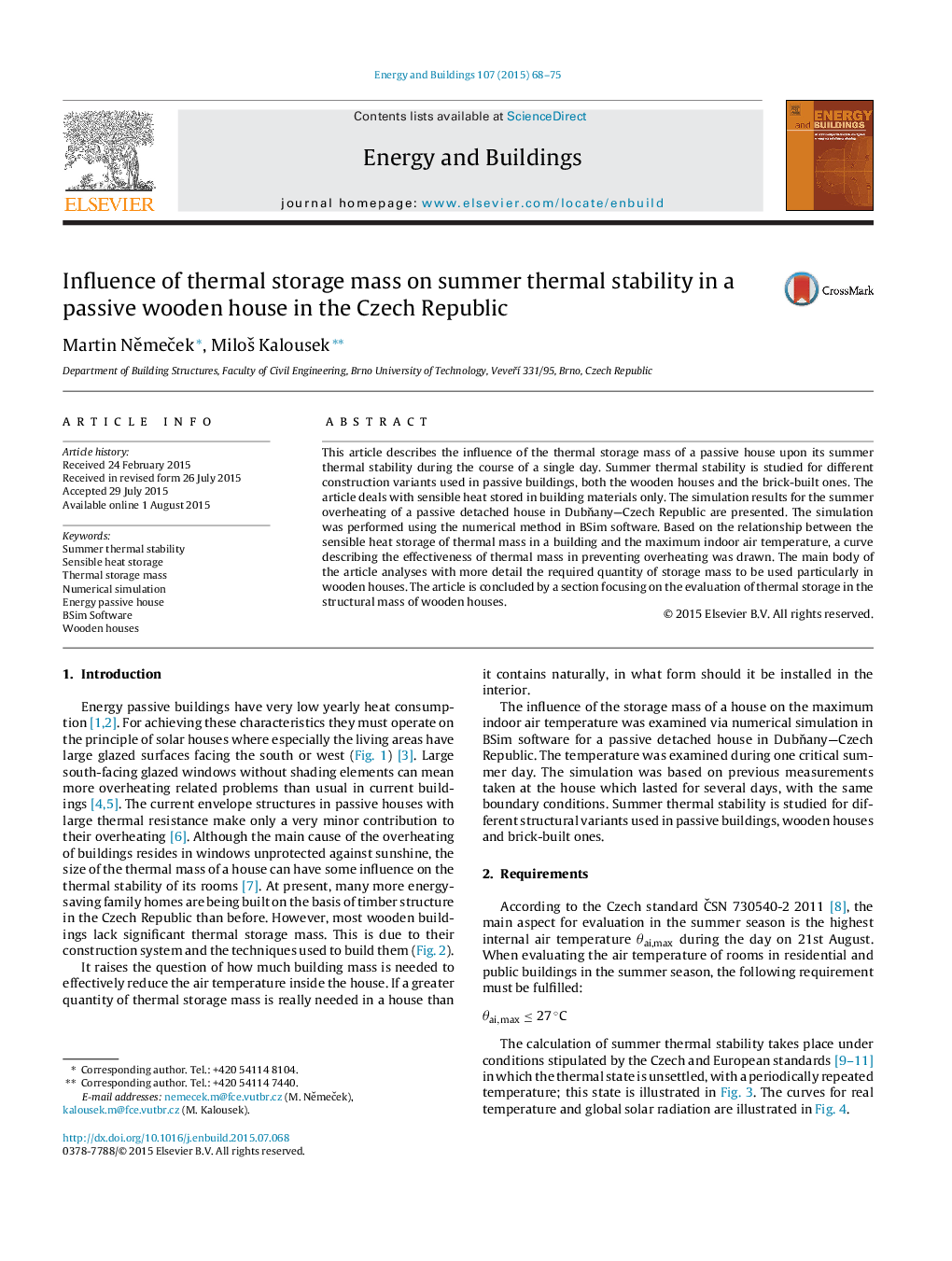| Article ID | Journal | Published Year | Pages | File Type |
|---|---|---|---|---|
| 262327 | Energy and Buildings | 2015 | 8 Pages |
•The curve of the effectiveness of thermal mass in preventing overheating is defined.•It is defined: Typical brick house with a total heat storage capacity 500 kJ m−2.•Heat storage capacity above 500 kJ m−2 is not effective in preventing overheating.•Wooden houses without thermal storage mass overheat more than typical brick houses.•It is appropriate to increase the amount of thermal storage mass in these buildings.
This article describes the influence of the thermal storage mass of a passive house upon its summer thermal stability during the course of a single day. Summer thermal stability is studied for different construction variants used in passive buildings, both the wooden houses and the brick-built ones. The article deals with sensible heat stored in building materials only. The simulation results for the summer overheating of a passive detached house in Dubňany—Czech Republic are presented. The simulation was performed using the numerical method in BSim software. Based on the relationship between the sensible heat storage of thermal mass in a building and the maximum indoor air temperature, a curve describing the effectiveness of thermal mass in preventing overheating was drawn. The main body of the article analyses with more detail the required quantity of storage mass to be used particularly in wooden houses. The article is concluded by a section focusing on the evaluation of thermal storage in the structural mass of wooden houses.
